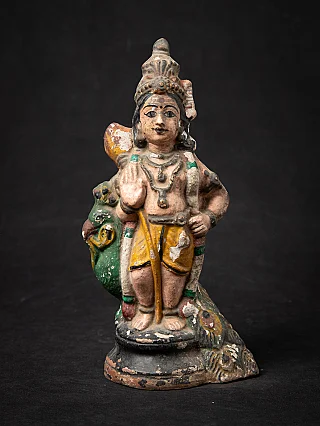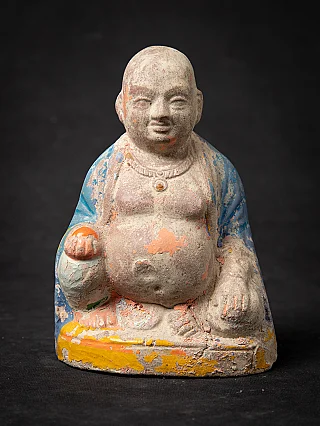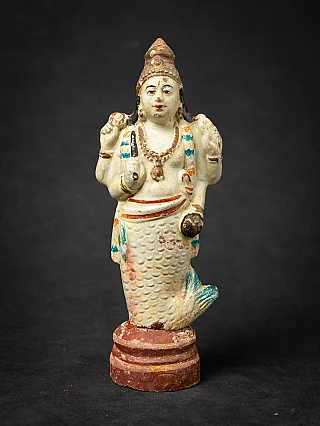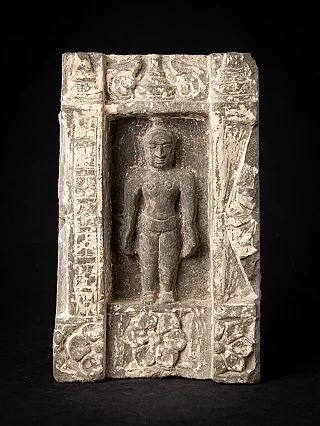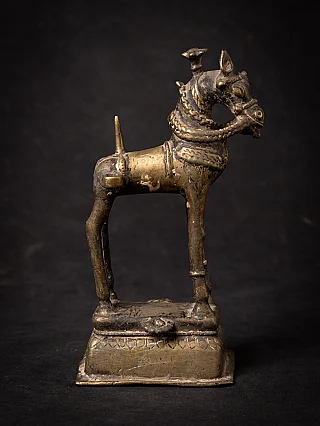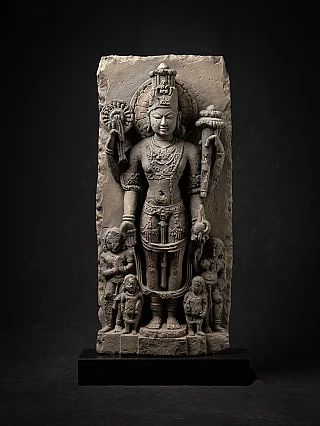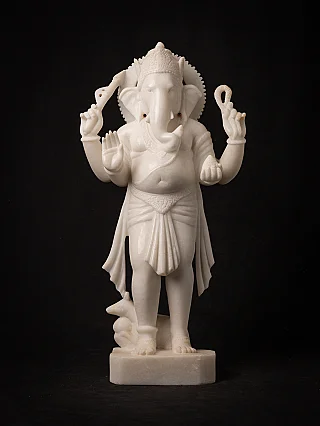Hindu Gods - Learn everything about Hindu Gods
Author : Peter Vredeveld

Hinduism, revered as an ancient and expansive religion, encompasses an awe-inspiring community of approximately 900 million followers worldwide. Within the rich tapestry of Hinduism, one discovers a captivating weave adorned with an array of Hindu god statues and Hindu deities, each intricately designed to symbolize and encapsulate diverse facets of life, spirituality, and the vast cosmic realm. These sacred representations, woven into the fabric of the belief system, offer a profound glimpse into the multifaceted nature of Hindu traditions, creating a mosaic of spirituality that resonates across generations.
The Diverse Realm of Hindu Deities: How many gods are there in Hinduism?
Hindu deities, expressed through the artistry of Hindu gods statues, encompass a vast spectrum of cosmic principles and attributes. They govern the universe, shaping the past, present, and future, and serve as tangible embodiments of spiritual truths. The question of how many Hindu gods, statues, and Hindu deities exist in Hinduism may yield varied answers, but most followers acknowledge the concept of "33 Kotis," signifying 33 types of deities. Some interpret this as 33 crores (330 million) of gods and goddesses, while others prefer a more limited interpretation. These Hindu god statues assume myriad forms and fulfill multifaceted roles.
In-Depth Exploration of Prominent Hindu Deities
Ganesha: The Wise and Compassionate Elephant-Headed Deity

Ganesha, born to Lord Shiva and Parvati, is celebrated as Ganapati, Vinayaka, and Vighneshvara. His distinctive elephant head symbolizes wisdom, understanding, and discriminating intellect. With four arms representing earth, water, fire, and air, Ganesha removers physical and spiritual obstacles. Statues of Ganesha, often found in homes and temples, serve as guardians against adversity and bring blessings of wisdom, success, and harmony in all endeavors. His image resonates deeply with devotees as a symbol of divine guidance through life's challenges.
""I am the Self, O Gudakesha, seated in the hearts of all creatures. I am the beginning, the middle and the end of all beings.""- Bhagavad Gita (Chapter 10, Verse 20)
In the above quote, Lord Krishna, speaking as the Supreme Being, emphasizes His omnipresence and role as the inner guide, much like Ganesha, who removes obstacles from the hearts of devotees.
Brahma: The Creator of the Universe

Lord Brahma, also known as Prajapati, plays the role of the divine architect of the cosmos. Born from the sun god Isha, Brahma disseminates knowledge about spirituality through the sacred Vedas. Statues of Brahma typically feature four heads and four hands, symbolizing his creative potency and the four directions of the universe. As the progenitor of all beings and the keeper of cosmic order, Brahma's presence inspires reverence for the divine blueprint of existence.
""The One Truth, sages call it by many names.""- ~ Rigveda
This profound verse from the Rigveda encapsulates the essence of Brahma's role as the Creator—the One Truth that takes on myriad forms and names in the diverse tapestry of existence.
Vishnu: The Preserver and Protector
Collection of Hindu God Statues

Vishnu, the preserver of the universe, manifests in various avatars (incarnations) such as Rama and Krishna. His statues portray a well-dressed figure with a blue or blue-gray complexion, reflecting his role as the protector and sustainer of the world. Vishnu's devotees revere him as the embodiment of righteousness and compassion, seeking his blessings for harmony, preservation, and spiritual upliftment. The concept of Vishnu's cosmic dream, where the universe is created, preserved, and dissolved, underscores the eternal cycle of existence.
""Whenever there is a decline in righteousness and an increase in unrighteousness, O Arjuna, at that time I manifest myself on earth.""- ~ Bhagavad Gita (Chapter 4, Verse 7)
In this verse, Lord Krishna (an incarnation of Vishnu) explains the purpose of His divine incarnations—to restore balance and righteousness in the world, just as Vishnu's statues symbolize the preservation of cosmic order.
Surya: The Radiant Sun God
Surya, the sun god, emerges from a drop of sweat during meditation and is revered for light, justice, and sustenance. He provides life-giving energy and punishes wrongdoers, symbolizing the relentless pursuit of Truth and righteousness. Statues of Surya capture his radiant essence, representing the source of light, Truth, and enlightenment. Devotees turn to Surya for vitality, enlightenment, and inner transformation as they bask in the warmth of his divine radiance.
""I am the light of the sun and the moon, and the sound in the ether.""- ~ Bhagavad Gita (Chapter 15, Verse 12)
This verse highlights the divine presence of the Supreme Being, much like Surya, as the ultimate source of light and illumination.
Agni Deva: The Fiery God of Fire
The god of fire, Agni Deva, born from the Sun's rays, is essential to Vedic rituals and spiritual purification. His seven tongues, seven arms, and other unique features symbolize the transformative power of fire, turning offerings into vehicles of communication with the divine. Agni Deva's blessings are sought for purity, protection, and the consecration of ceremonies, igniting the inner fire of devotion in the hearts of devotees.
""O Agni, lead us on to wealth and prosperity by the right path.""- ~ Rigveda
This Vedic hymn reflects the central role of Agni Deva in guiding seekers on the path of spiritual awakening and abundance.
Varuna: The Guardian of the Celestial Ocean
Varuna, associated with water and justice, presides over the celestial ocean and determines the fate of souls. He is intimately linked to rain, thunder, and the flow of cosmic order. As the guardian of the breath of life (vani), Varuna holds a significant role in Hindu cosmology, emphasizing the interconnectedness of all life. Devotees seek Varuna's guidance for emotional and spiritual balance, understanding the ebb and flow of life's currents.
""That which is above the earth, below heaven, and between the two firmaments, as well as that which is between these two forms of atmosphere, alone is the world of Varuna.""- ~ Rigveda
This profound verse underscores Varuna's jurisdiction over the cosmos and highlights his role as the cosmic guardian.
Vayu: The Wind God
Vayu, the god of wind, carries everything on his wings, from seeds to gods, symbolizing the vital force of life. His blessings are sought for prosperity, renewal, and the flow of positive energy. Devotees invoke Vayu for spiritual insight, inner renewal, and the infusion of life's breath, finding resonance with the elemental forces that shape existence.
""As a person puts on new garments, giving up old ones, the soul similarly accepts new material bodies, giving up the old and useless ones.""- ~ Bhagavad Gita (Chapter 2, Verse 22)
This verse, spoken by Lord Krishna, invokes the idea of renewal and transformation, much like the role of Vayu in carrying the breath of life.
Indra: King of the Gods
Indra, the sovereign of the heavens and king of the gods, governs rain, fertility, and cosmic order. He wields a thunderbolt weapon known as Vajra and rides a white elephant named Airavata. Indra's multifaceted nature encompasses warrior and protector roles, reflecting the dynamic interplay of power and wisdom. Devotees turn to Indra for courage, strength, and the restoration of cosmic harmony, recognizing his pivotal role in upholding the celestial and earthly realms.
""Indra, you have scattered the darkness that veiled the Sun. You have driven the black Serpent from the sky.""- ~ Rigveda
This hymn from the Rigveda underscores Indra's role as the vanquisher of obstacles and darkness, much like the symbolism of his thunderbolt.
Hindu God Statues: Portals to the Divine
Hindu god statues are not mere representations; they are conduits of spirituality and devotion, serving as tangible focal points for meditation and worship. Crafted with precision and infused with symbolism, these statues bridge the gap between the earthly and the divine. Each deity's form, pose, and attributes convey profound cosmic truths and spiritual wisdom, inviting devotees to experience the presence of the divine within the physical realm. In moments of meditation and worship before these statues, the faithful find solace, inspiration, and profound connection, as they embark on their inner journeys of self-discovery and enlightenment.
A Shared Spiritual Heritage: Hinduism and Buddhism
Hinduism and Buddhism share a profound spiritual connection, with common principles like karma, dharma, and moksha interwoven into both traditions. The interplay between these sister faiths enriches the cultural and religious tapestry of the Indian subcontinent, offering seekers a diverse path to enlightenment and self-realization. The teachings of Buddha, deeply rooted in the spiritual landscape of ancient India, continue to resonate with those seeking liberation from suffering and the attainment of enlightenment.
Conclusion
In conclusion, Hinduism's diverse Hindu god statues and the intricate artistry of these representations reflect a profound and enduring tradition. These statues, whether serving as symbols of wisdom, protection, or creative power, guide the faithful on their spiritual journeys, providing a tangible link to the divine. With its profound spiritual heritage and timeless wisdom, Hinduism continues to inspire and enlighten seekers of Truth worldwide.
Exploring the world of Hindu deities and their statues evokes inspiration, connection, and a profound understanding of spirituality, cosmic truths, and the complex web of divine interplay.
These statues, bearing the essence of millennia of devotion and wisdom, stand as timeless portals to the infinite depths of the human spirit and the divine realms beyond.
""To those who are constantly devoted to serving Me with love, I give the understanding by which they can come to Me.""- ~ Bhagavad Gita (Chapter 9, Verse 22)
This verse from the Bhagavad Gita emphasizes the transformative power of devotion, which is at the heart of Hindu worship and reverence for deities.
As we conclude our journey through the realms of Hindu god statues and deities, let us carry forward the wisdom of the ages and the timeless teachings of the sacred texts, finding solace and inspiration in the divine presence that transcends all forms and names.
Share this page



















